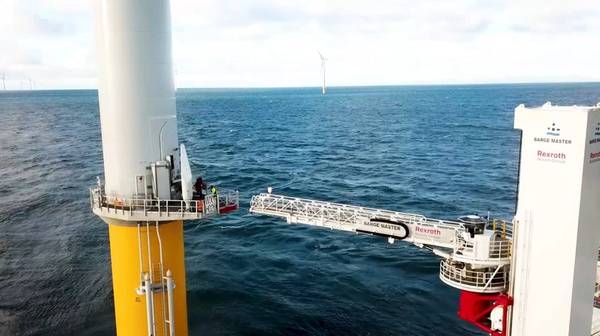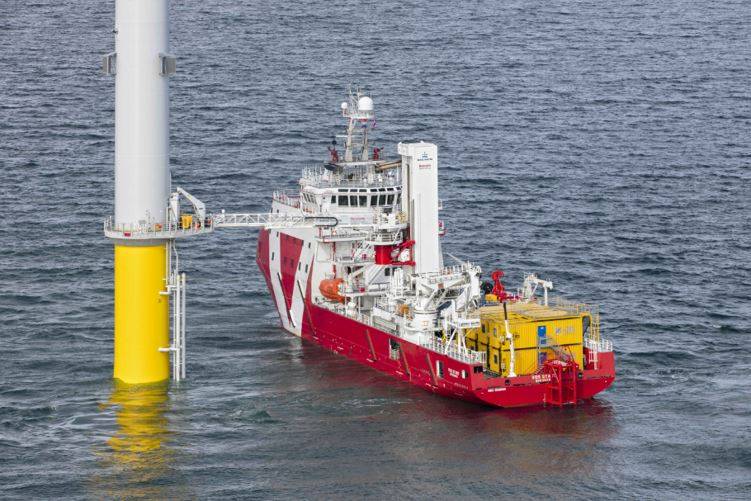
Offshore gangways, motion-compensated at that, used for crew and equipment transfers from vessels to offshore oil and gas and wind installations have been around for a while.
While the motion-compensation technology keeps a gangway steady for the crew to walk to an offshore installation safely in a harsh offshore environment, according to Bosch Rexroth, manual control is still required when it comes to engaging the landing with the platform, which can be tricky.
"Depending on the experiences of the operator as well as the weather conditions, this can become a challenging task," says Bosch Rexroth, a company that has now launched a solution to make the gangway landing automated.
In cooperation with Barge Master, a Dutch company specializing in motion-compensated offshore gangways, Bosch Rexroth has launched an autonomous landing system that attaches to offshore installations automatically, increasing safety, and available operational hours.
 After the automated landing procedure, the Barge Master gangway is held safely in place through a combination of motion compensation and the ship’s dynamic positioning. (Copyright Barge Master)
After the automated landing procedure, the Barge Master gangway is held safely in place through a combination of motion compensation and the ship’s dynamic positioning. (Copyright Barge Master)
According to the company, through a combination of sophisticated radar technology, cameras, and sensors, the system automatically attaches the landing to the required site without the need for manual input.
This means that the operation is consistent and reliable, regardless of weather and ocean conditions, Bosch Rexroth said, adding that once connected, the landing utilizes the usual motion compensation which works alongside the vessel’s dynamic positioning system to ensure a safe, steady connection between the ship and the platform.
"There are a number of benefits to the autonomous landing system,” says Rene Coppens, Business Development for Barge Master systems at Bosch Rexroth. “First of all, it’s a further improvement of safety. Perhaps most importantly though, our systems increase the available operational hours. Our system can work in difficult conditions and does not depend on the availability of operators, so it can really improve the uptime. These three key benefits present a real step forward in autonomous landing solutions.”
The company said that the autonomous landing solution is now available to order at new build vessels and should be available for retrofit later this year on the Barge Master motion compensated gangways.
"We’ve seen a lot of interest in the systems already,” adds Coppens. “Customers can already see the potential in this kind of automation, and how it can have a real positive impact on their businesses.” The detection of the docking area (Copyright: Bosch Rexroth AG)
The detection of the docking area (Copyright: Bosch Rexroth AG)



